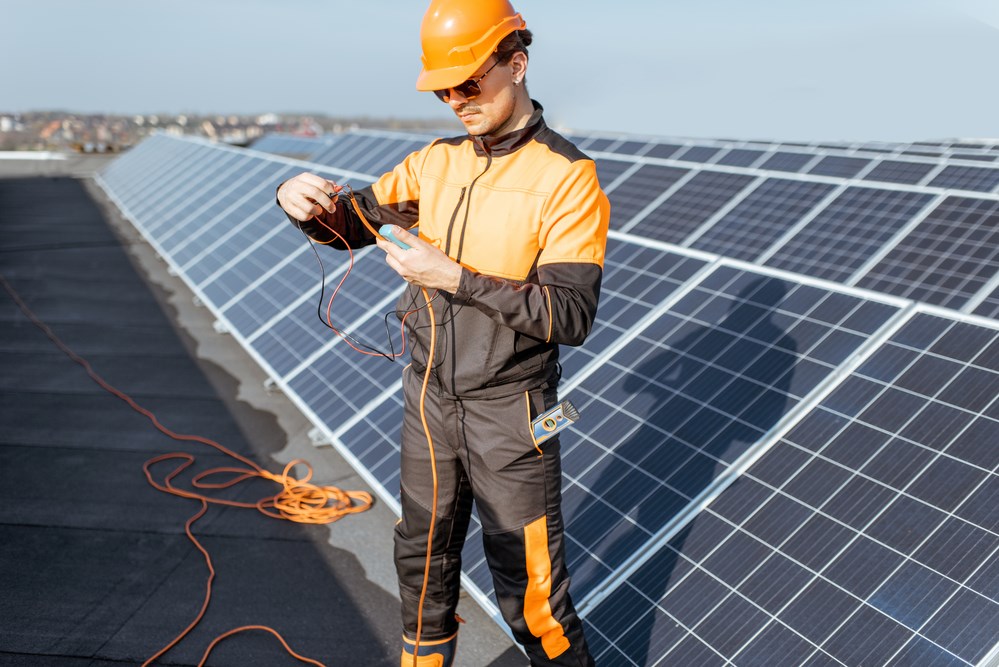Testing the power output of solar panels accurately is crucial for assessing their performance and efficiency.
- Use a Pyranometer or Solar Irradiance Meter:
- Start by measuring the solar irradiance or sunlight intensity at the location of the solar panels. Use a pyranometer or solar irradiance meter to measure the amount of sunlight (in watts per square meter) that is falling on the panels. This measurement provides a baseline for assessing the panels’ performance.
- Clean the Solar Panels:
- Ensure that the solar panels are clean and free of dust, dirt, and debris. Cleaning the panels ensures that they receive maximum sunlight exposure, and any obstructions are removed.
- Monitor Weather Conditions:
- Choose a day with clear skies and minimal cloud cover for testing. Weather conditions can significantly affect the accuracy of your measurements.
- Measure Voltage and Current:
- To calculate the power output of solar panels, you will need to measure both the voltage (V) and current (I) generated by the panels. You can do this using a multimeter or a specialized solar power meter.
- Select a Load Resistor (Optional):
- If you want to measure the maximum power output (peak power) of the panels, you can connect a variable load resistor to the panels. Adjust the load resistor until you achieve the maximum power point (MPP), where the product of voltage and current is highest. This is typically done to determine the panel’s maximum power under specific conditions.
- Calculate Power Output:
- Calculate the power output (P) of the solar panels using the formula: P = V × I, where V is the voltage and I is the current. Make sure to measure both the voltage and current at the same time to get an accurate instantaneous power reading.
- Repeat Measurements:
- To ensure accuracy, repeat the measurements at different times of the day to account for variations in sunlight intensity and panel temperature. This will give you a more comprehensive understanding of the panels’ performance.
- Temperature Compensation:
- Consider the temperature of the solar panels during testing. Solar panels can heat up during operation, which can affect their performance. Some meters offer temperature compensation features to correct for this.
- Record Data:
- Keep a detailed record of your measurements, including the date, time, solar irradiance, temperature, and the corresponding voltage and current readings. This data will help you assess the panels’ performance over time and under different conditions.
- Compare Results:
- Compare the measured power output to the rated power output specified by the manufacturer. This will help you determine if the panels are performing as expected.
- Regular Maintenance and Monitoring:
- After the initial testing, continue to monitor the panels’ performance regularly. Regular maintenance, cleaning, and monitoring are essential for ensuring optimal long-term performance.
By following these steps and using appropriate measurement equipment, you can accurately test the power output of solar panels and assess their efficiency and performance under various conditions.


